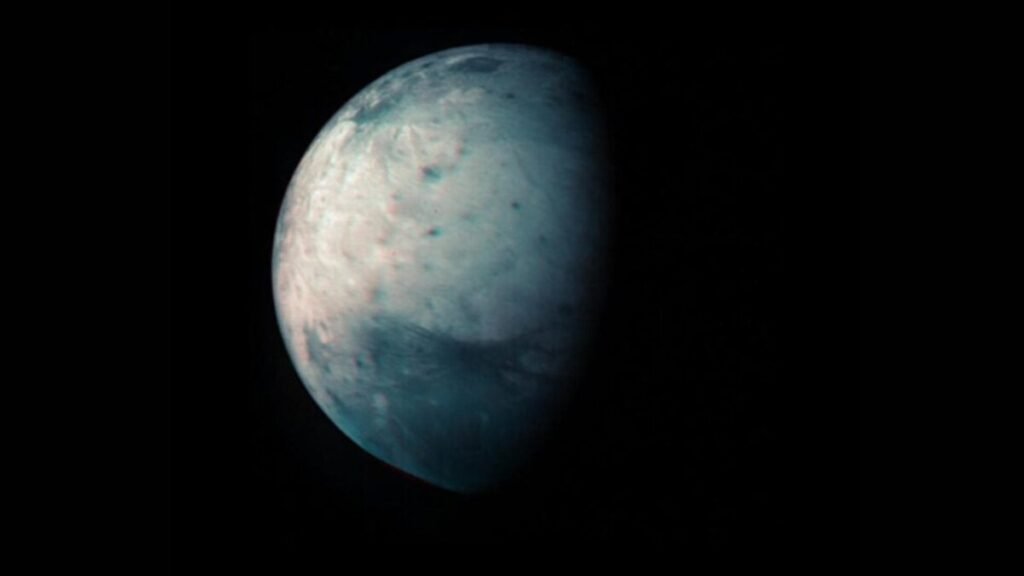Ganymede: A Potential Solution for Unveiling Dark Matter?

When it comes to searching for the invisible, physicists know that the larger the detector, the more possibilities there are of finding something. This idea led researcher William DeRocco from the University of Maryland to propose a science fiction-like idea: using Ganymede, the largest moon in the solar system, as a gigantic natural detector of dark matter.
Dark matter, which makes up approximately 85% of the universe, does not emit or reflect light. We know it is there because of its gravitational influence, but it has never been directly seen. Detecting it is one of the biggest challenges in modern physics, and DeRocco believes Ganymede could hold the key.
Craters as Invisible Footprints
According to his hypothesis, dark matter particles, extremely massive, would have impacted Ganymede’s icy surface in the past. These impacts would have left deep marks: unique craters accompanied by minerals dragged from the moon’s internal oceans to the surface.
The difference with other experiments on Earth is that this would not involve tiny and difficult-to-detect particles, but much larger candidates. The traces of these impacts could be observed with the space probes already on their way to Jupiter, such as NASA’s mission or ESA’s JUICE.
Even with ice-penetrating radar, a “tube” of melted ice could be identified cutting through the layers to the subterranean ocean, a unique footprint of a dark impact.
A Crazy Plan or a Unique Opportunity?
The idea may sound crazy, but as experts point out, the history of physics is full of advances that started as crazy ideas. Astrophysicist Bradley Kavanaugh from the University of Cantabria highlighted that the proposal is interesting in principle, although there is still no evidence that such heavy dark matter particles really exist.
Nevertheless, there is also no evidence to dismiss it. And since current telescopes and probes are already approaching Ganymede, the opportunity to verify it could be closer than we think.
Dark matter is a cosmic puzzle: we know it influences the rotation of galaxies and the structure of the universe, but we cannot see it or capture it with current detectors. Turning Ganymede into a “natural detector” would be like taking advantage of an impossible scale to replicate on Earth.
If DeRocco’s hypothesis is confirmed, not only would we have identified a new type of particle, but we would also have shown that moons and planets can become silent allies in the search for the deepest secrets of the universe.






